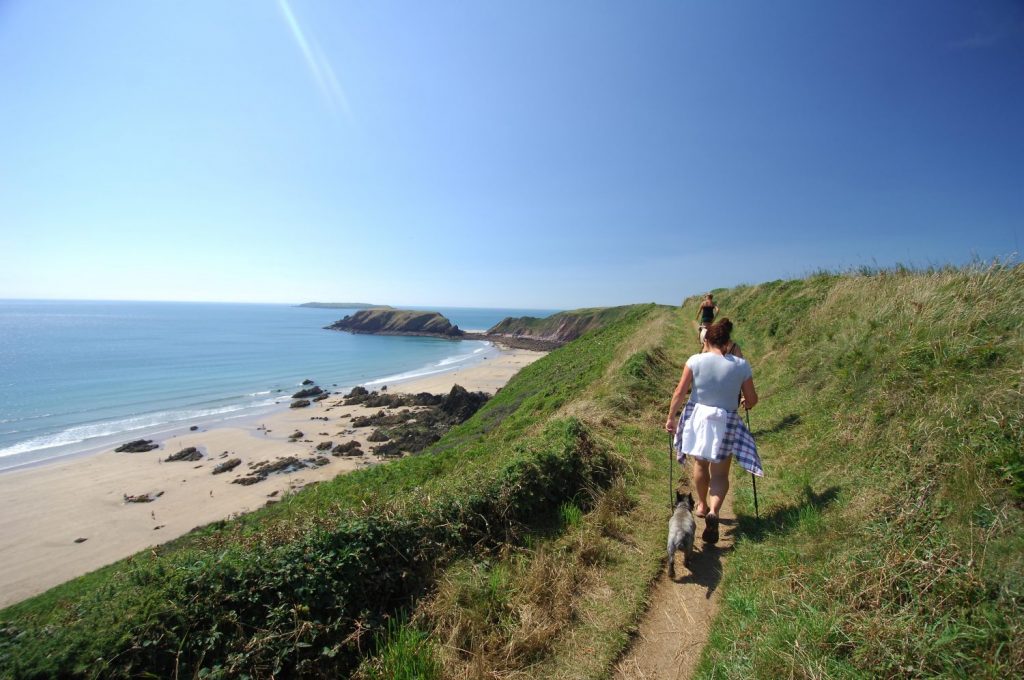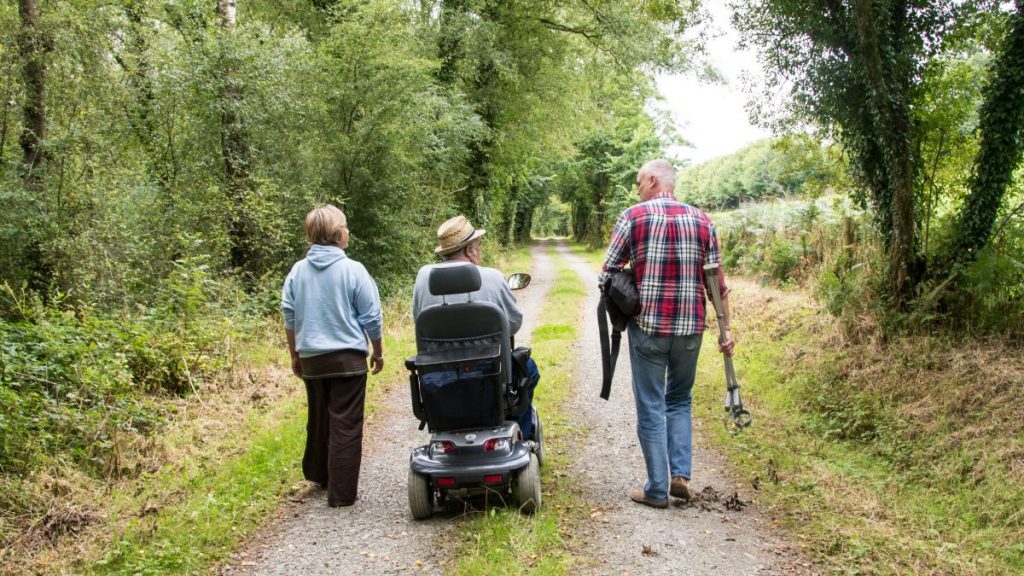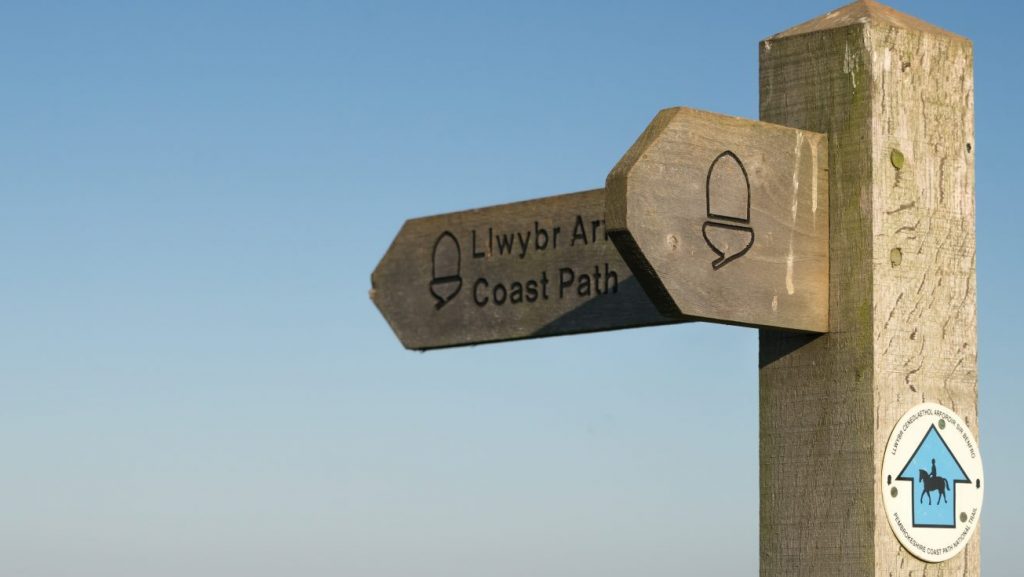DISTANCE/DURATION: 2.6 miles (4.2 km) 1 hour 30 minutes.
PUBLIC TRANSPORT: Service bus Penally 349, Railway station at Penally.
CHARACTER: Cliff top walking, fields and livestock.
LOOK OUT FOR: Choughs and limestone cliffs.
CAUTION: Cliff path closed during firing times. Telephone 01834 842358 for details of firing and path closure.
Great coastal views, World War I history and vivid limestone cliffs
Important note: The route passes through Penally MoD Range. When the red flag is flying and signs are up there is no access due to firing – you will need to take the short cut shown on the map. Call 01834 842358 for details of firing and path closure.
The limestone cliffs at Penally are home to a range of birds including fulmar, razorbill and many gulls (mostly herring).
It’s also known for its chough, which can be distinguished from the ever present jackdaw by their bright red beaks and legs, and raucous chow call, from which its name is derived.
There are terrific views up and down the coast from Giltar Point; to the west you can see Lydstep Point with the caverns beneath and Skrinkle Haven where the limestone replaces the old red sandstone in the cliffs.
Views to Caldey and St Margarets – even Lundy on a clear day – can be seen out to sea. To the south east there are views over the beach and the dunes to Tenby.
From the alternative route footpath (when the range is closed), heading north east to the railway bridge, you can see a unique World War I practice trench system where troops were trained before being sent to war in France.
The Penally Range Practice Trenches system is believed to be the only complete surviving example in the UK. An information board by Penally History Group and the National Park Authority explains the unique, historic landscape and the importance it played in training troops for the battlefield.
Look out for this board near the concrete sentry post at ‘Valleyfield Top’ at the south west point of the Range.
Penally Army Range has been used for military training since 1860 and is still in use today. Today the land is also managed for nature conservation by the National Park Authority in partnership with the MOD.
Find this Walk
Grid ref: SS116991
SAFETY FIRST!
- Take great care when on the Coast Path
- Stay on the path and away from cliff edges
- Wear boots and warm, waterproof clothing
- Take extra care in windy and/or wet conditions
- Always supervise children and dogs
- Leave gates and property as you find them



